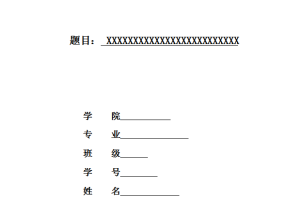Abstract
Reading is an important way of gaining information in foreign language learning. It has been considered as one of the most basic and useful skill for a foreign language learner. Improving reading comprehension must be put in the first place in language teaching. Therefore, teachers should know how to improve the ability of reading so that it can enhance students’ English-learning successfully. However, the current situation of the teaching of English reading is far from satisfying in China. Students are trained to be good at memorizing words and analyzing sentence structures, while they will be at a loss when faced with passages or articles.
Therefore, researchers have proposed many new theories, such as three influential reading models: the bottom-up model, the top-down model and the interactive model. However, none of these teaching methods was perfect. Later, context theory comes into play. Since it was proved to be effective, more and more teachers try to apply it to their teaching nowadays.
This thesis is made up of five chapters. Chapter one, the introduction, is an overview about the current teaching of English reading in China. Chapter two the definition of context is discussed. There are different views of context according to many linguists both at home and abroad. Chapter three is about the classification of context. Since there is not a set rule to the classification of context, this thesis classifies it into three kinds: linguistic context, situational context, and cultural context. Chapter four is the main part of the thesis. It focuses on applications of context theories to the teaching of English reading. The aim of this chapter is to find out how context works in practical teaching. It is illustrated from three points: applying linguistic context theory to English reading, applying situational context theory to English reading, applying cultural context theory to English reading. The last chapter is the conclusion, which takes a retrospect at the whole thesis and emphasizes the significance of context theory to the teaching of English reading.
The applications of context theories in the teaching of English reading will improve students’ reading skills and English competency. As one of the most important fields in foreign language teaching, reading can also be better and efficiently taught if it is placed within context.
Key words: Teaching of English reading Context theories
Linguistic context Situational context Cultural context
摘要
在学习外语的过程中,阅读是获取信息的有效途径。所以,阅读技能被认为是学习外语最基本和最有用的技能之一。在传授一门新语言时,必须把提高阅读能力放在第一位。因此,教师应该懂得如何提高学生的阅读能力,从而增强学生学习英语的能力。但是,中国目前英语阅读教学的情况仍存在着很大的缺陷。学生被训练成记忆单词和分析句子结构的能手,却不能正确地理解整篇文章。
针对这种状况,研究人员们提出了许多新的阅读学习理论,例如:自下而上模式,自上而下模式以及交互式模式这三种影响较大的阅读模式。但是,这三种模式都存在着不足。后来,出现了语境理论。实践证明,语境理论对英语阅读教学是行之有效的。因此,现在越来越多的教师尝试着把语境理论引进课堂教学。
本文分为五个章节。第一章简要介绍我国英语阅读教学的现状。第二章列举了国内外某些语言学家对语境的定义和看法。第三章谈到了语境的分类。本文把语境分为:语言语境,情境语境和文化语境。第四章是文章的重点,主要阐述了语境理论在英语阅读教学中的应用。这一章论证了语言语境,情境语境和文化语境这三个方面分别在英语阅读教学中的应用。最后一章是本文的结论部分。对文章作了整体回顾,并强调了语境理论对英语阅读教学的意义。
从语境角度进行英语阅读教学,不但能有效提高学生的阅读技能,同时也能全面提高学生的语言能力。
关键词:英语阅读教学 语境理论 语言语境 情境语境 文化语境
Contents
Acknowledgements………………….……………………………………………….i
Abstract in English………………….……………………………………………….ii
Abstract in Chinese…………………………………………………………………..iv
Chapter 1 Introduction ………………….……………………………………………….1
Chapter 2 Definitions of context …………………………………………………………..3
2.1 Foreign linguists’ views on context …………………………………………… 3
2.1.1 View of Malinowski ………………………………………………………………3
2.1.2 View of Firth ……………………………………………………………….4
2.1.3 View of Halliday ……………………………………………………………5
2.2 Chinese linguists’ views on context ……………………………………………..6
Chapter 3 Classifications of context ……………………………………………………6
3.1 Linguistic context………………………………………………………………..7
3.2 Situational context …………………………………………………………………7
3.3 Cultural context………………………………………………………………….8
Chapter 4 Applications of context theories to the teaching of English reading ………8
4.1 Applying linguistic context theory to English reading……….………………….9
4.1.1 Inferring meanings of new words……………………………………….9
4.1.2 Predicting the content of reading material……………………………..11
4.2 Applying situational context theory to English reading ……………………….12
4.2.1 Teaching grammar within situational context …………………………..13
4.2.2 Understanding the text within situational context………………………14
4.3 Applying cultural context theory to English reading …………………………….15
4.3.1 Culture-loaded words learning……………………………………………16
4.3.2 Cultural background knowledge learning……………………………..17
Chapter 5 Conclusion ……………………………………………………………….18
References………………………………………………………………………………..20





